| 10 October |
• yesterday • tomorrow |
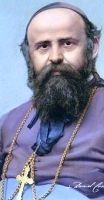
Educated at Father Mazza's Institute in Verona, Italy, studying theology, medicine, and several languages. Ordained on 31 December 1854 in the diocese of Verona, Italy by Blessed John Nepomuk von Tschiderer. Missionary to modern Sudan in 1857, but returned home in 1859 due to ill health. Taught at Mazza's Institute 1861 to 1864. Wrote on the need for aid in Africa, that the aid should be used to "Save Africa Through Africa", treating Africans as adults in need of a hand, not children in need of guidance as was common in European thought of the day. Travelled to France, Spain, England, Germany, and Austria to on fund-raising missions.
In 1867 at Verona, he founded the Istituto delle Missioni per la Nigrizia for priests and brothers, and the Istituto delle Pie Madri for women who were called to work in Africa; they became known as the Comboni Missionaries, and in 1894 became the Congregation of the Sons of the Sacred Heart. He opened similar institutions in Cairo, Egypt, to acclimatize missionaries to Central Africa. Wrote to the 1st Vatican Council in 1870 on the need for Church's involvement in African conversion. Pro-vicar Apostolic of Central Africa in 1872 covering Nubia, Egyptian Sudan, and the territory south to the Lakes (nearly 100,000,000 people). He founded missions in El-Obeid (Kordofan), Khartoum, Berber, Delen, and Malbes. Vicar Apostolic of Central Africa, titular bishop of Claudiopolis, and Bishop of Khartoum in 1877.
He helped suppress the slave trade in the region. Contributed material for scientific works about the region, and of its geography; works on several dialects were based in large part on Daniel's notes about the languages. He spoke six European languages, Arabic, and several central African dialects. The Comboni Family continue their work today with priests, brothers and sisters ministering in hospitals, schools, and orphanages in 41 countries.
15 March 1831 at Limone sul Garda, Italy
10 October 1881 of natural causes at Khartoum, Sudan of natural causes
5 October 2003 by Pope John Paul II
The missionaries will have to understand that they are stones hid under the earth, which will perhaps never come to light, but which will become part of the foundations of a vast, new building. - Saint Daniel Comboni
From the time of his priestly formation in the institute founded by the Servant of God Nicola Mazza, Daniel Comboni felt called to give his own life to proclaim the Gospel in the land of Africa. This awareness stayed with him throughout his life and supported him in his missionary labours and pastoral difficulties. He felt comforted in this dedication by the words he heard from Pope Pius IX: "Labora sicut bonus miles Christi pro African" ("Work like a good soldier of Christ for Africa" Scritti, n. 4085). The modernness and boldness of his work were expressed in the preparation and formation of future priests, in the tireless promotion of the missions by his writing and publishing, in the founding of two institutes one for men, the other for women exclusively dedicated to the mission "ad gentes", by struggling for the abolition of the terrible slave-trade and by actively working "for the rebirth of Africa through itself". These insights of the new blessed produced great fruit for the evangelization of the African continent by paving the way to the consoling growth of the Church in Africa today (cf. Apostolic Exhortation Ecclesia in Africa, nn. 3338). "Leading humanity to the light of eternal life": Daniel Comboni's ideal continues today in the apostolate of his spiritual sons and daughters. They still maintain strong ties in Africa, particularly in Sudan, where their founder spent a great part of his energy as a tireless evangelizer and where he died at a young age, worn out by his labours and illness. The unconditional trust he had in the power of prayer (cf. Scritti n. 2324) is effectively expressed in the "Cenacles of missionary prayer" which are being set up in many parishes and represent a significant way to promote and renew missionary spirituality. - Pope John Paul II at the beatification ceremony for Blessed Daniel on 17 March 1996
https://catholicsaints.info/saint-daniel-comboni/

• Maria Angela
• Mother Mary Angela
• Sophia Truszkowska
• Zofia Kamila Truszkowska
Eldest daughter of Joseph and Josephine Truszkowski, Polish nobles. Well educated, Sophia was a pious, and lively youth with a frail constitution. She relocated to Warsaw, Poland in 1837, and attended the Academy of Madame Guerin. Due to respiratory illness, she and her tutor Anastasia moved to Switzerland in 1841 at age 16. On 26 June 1848, at age 23, she had a moment of extraordinary grace that she considered a conversion experience, and which led her to the religious life. Spiritual student of Capuchin Father Honorat Kozminski in 1854. Joined the Society of Saint Vincent de Paul in 1855 to help the poor, aged and homeless of Warsaw. Housed homeless children into her own home. In November 1854, she and her cousin Clothilde rented a two-room apartment at 10 Church Street, Nowe Miasto, in Warsaw. There homeless children spent their days in class and Mass, and then stayed the night; it was known as the Institute of Miss Truszkowska. Sophia prayed with the children at the Shrine of Saint Felix of Cantalice in a nearby Capuchin church. People call the kids the "children of Saint Felix" and the women the Sisters of Saint Felix, the Felicians. Thus was founded the Felician Sisters who are devoted to service to the poor, orphaned, sick and elderly. In 1855 Sophia and Clothilde become Franciscan tertiaries, Sophia taking the name Angela. She was forced to withdraw as its leader due to increasing deafness.
16 May 1825 at Kalisz, Poland as Sophia Camille Truszkowska
12.45am 10 October 1899 of natural causes
18 April 1993 by Pope John Paul II
• against sickness
• exiles
• sick people
Help all without discrimination, friend and foe alike. Everyone is our neighbor. - Mother Angela Truszkowska
God, our Father, you graced Blessed Mary Angela with a living faith and boundless love which she manifested in complete surrender to your divine will. By her prayers and witness may we strive to seek, to accept, and to fulfill your will in all circumstances of our lives. Grant this through our Lord Jesus Christ, your Son, who lives and reigns with you and the Holy Spirit, one God, forever and ever. - approved by the Congregation for Divine Worship, 25 March 1993
https://catholicsaints.info/blessed-angela-truszkowska/
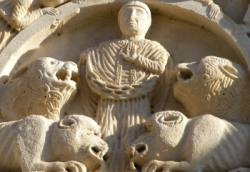
• Cerbonius of Piombino
• Cerbonius of Massa Marittima
• Cerbo, Cerbone, Cerbonio
Raised in a Christian family in North Africa. Priest, ordained by Saint Regulus. He and most other Christians in his area fled ahead of the Vandal persecutions; he and many other moved to the Tuscany region of Italy and lived as hermits.
His reputation for holiness spread, and Cerbonius was chosen bishop of Populonia, Italy c.544; he soon became unpopular as he conducted Sunday Mass at dawn, forcing his flock to get up in the middle of the night. Pope Vigilius summoned him to Rome to answer the complaints. When he arrived, Cerbonius woke the pope at dawn for Mass; the two heard the singing of angels, Vigilius gave him permission to say Mass whenever he thought proper, and sent him home.
For hiding Roman soldiers who were fleeing invading Ostrogoths, Cerbonius was ordered to be executed by being thrown to a bear. The bear was terrified of Cerbonius, fell to the ground and began licking the bishop's feet. Cerbonius was exiled to the island of Elba, Italy instead, where he spent the rest of his life as a prayerful hermit.
c.493 in North Africa
• 575 in Elba, Italy
• buried at his request in Populonia, Italy
• at Populonia there is a fountain and chapel dedicated to Saint Cerbonius; local lore says that "Whoever does not drink from the fountain of Saint Cerbonius is a thief or a rascal."
• relics re-located to the Saint Cerbonius cathedral in Massa Marittima, Italy
• with Pope Vigilius
Massa Marittima, Italy
• bishop with a bear licking his feet
• bishop healing three men dying of fever
• geese (on the trip to Rome to answer the summons of Pope Vigilius, he turned a flock of geese into pets by making the Sign of the Cross over them; when they reached Saint Peter's Basilica, he made the Sign again and freed the birds)
• priest or bishop celebrating Mass at dawn
• pastoral staff
https://catholicsaints.info/saint-cerbonius-of-populonia/
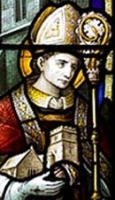
The Venerable Bede describes him as a "tall man with a slight stoop, who had black hair, a thin face and a narrow, aquiline nose, his presence being venerable and awe-inspiring". Monk at the monastery of Saint Andrew, Rome, Italy. Missionary to the Anglo-Saxons in 601, sent by Pope Saint Gregory the Great. Worked with Saint Augustine of Canterbury, Saint Justus of Canterbury, and Saint Mellitus of Canterbury. Evangelized in Kent for 24 years. Bishop of York in 625. First missionary to Northumbria, converting thousands including King Saint Edwin in 627. When the pagan Mercians defeated Edwin's forces in 633, Paulinus retreated to Kent with the remaining royal family. Friend of Saint Ethelburgh of Kent. Bishop of Rochester.
584 in Rome, Italy
• 10 October 644 at Rochester, Kent, England of natural causes
• interred in Rochester cathedral
Rochester, England
archbishop baptizing King Saint Edwin
This is how the present life of man on Earth, King, appears to me in comparison with that time which is unknown to us. You are sitting feasting with your ealdormen and thegns in winter time. The fire is burning on the hearth in the middle of the hall and all inside is warm, while outside the wintry storms of rain and snow are raging - and a sparrow flies swiftly through the hall. It enters in at one door and quickly flies out through the other. For the few moments it is inside, the storm and wintry tempest cannot touch it, but after the briefest moment of calm, it flits from your sight, out of the wintry storm and into it again. So this life of man appears but for a moment. What follows or, indeed, what went before, we know not at all. - Saint Paulinus of York, speaking in Northumbria
https://catholicsaints.info/saint-paulinus-of-york/

• John Thwing
• John of Thwing
• John Twenge
• John Thwing of Bridlington
• 9 October among the Augustinian Canons Regular
• 1 December as one of the Martyrs of Oxford University
Studied at Oxford, England from age 17. Augustinian Canon Regular at age 19. Held several posts in Saint Mary's abbey in Bridlington, England. Reluctant prior of Saint Mary's for 17 years beginning in 1362. Highly recommended the study of the Gospel of Saint John as a source for information and inspiration on the Gospel life.
King Henry V's victory at Agincourt was attributed to the aid of Saint John of Bridlington and Saint John of Beverly. Five sailors from Hartlepool were in danger of drowning, and called for the help of Saint John; the holy prior appeared to them at sea, wearing his habit. He led the men safely to shore.
1319 at Thwing (near Bridlington), Yorkshire, England
• 10 October 1379 of natural causes
• relics translated 11 March 1404
• 1401 by Pope Boniface IX
• the Bull of Canonization has been lost
women in difficult labour
• with a book, crosier, and fur almice
• with these items and with a muzzled animal at his feet
https://catholicsaints.info/saint-john-of-bridlington/

• Daniele Fasanella
• Deniele of Ceuta
Priest who joined the Franciscans in 1219. In 1224 he helped found the convent of Santa Maria del Soccorso near Rogliano, Italy. He helped found the convent of Gerace Superiore. Provincial superior of Calabria, Italy.
Called to missionary work, he was one of a group of seven Friars Minor who tried to bring the faith to Muslims in the area of Ceuta, Spain, which borders on modern Morocco. Initially treated as madmen, especially since they were street-preaching in Latin and Italian, within three weeks they were ordered to convert to Islam, and when they would not, they were first abused in the streets, then arrested, tortured and executed. Martyr.
latter 12th century Belvedere Marittimo, Kingdom of Sicily (modern Italy)
• beheaded in October 1227 in Mauritania Tingitana, Almohad Empire (modern Ceuta, Spain)
• local Christians secreted the bodies away and gave them proper burial in Ceuta
22 January 1516 by Pope Leo X
• Belvedere Marittimo, Italy
• Orani, Italy
• Ceuta, Spain
https://catholicsaints.info/blessed-daniele-di-calabria/
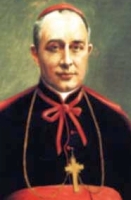
12 June as one of the 108 Martyrs of World War II
Priest. Auxiliary bishop of Plock, Poland, serving with Blessed Antoni Julian Nowowiejski. Father Leon was known for his personal piety, as an enthusiastic pastor, and for a ministry to the poor. He was arrested> with Blessed Antoni in the persecutions of the Gestapo during the Nazi occupation of Poland in World War II, and imprisoned in the Dzialdowo concentration camp. Martyr.
10 April 1886 in Zuromin, Mazowieckie, Poland
10 October 1941 in the prison camp at Dzialdowo, Warminsko-Mazurskie, in Nazi-occupied Poland
13 June 1999 by Pope John Paul II in Warsaw, Poland
If you, God the Merciful and Good, would give me a grace that they call a martyr’s death, accept it mainly for my sins and for those who would ask it to me, that they, God, and Merciful, they loved with all their hearts. - Blessed Leon, 4 April 1932
https://catholicsaints.info/blessed-leon-wetmanski/
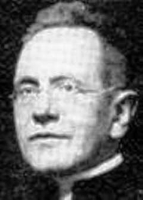
12 June as one of the 108 Martyrs of World War II
Priest in the archdiocese of Warsaw, Poland where he served as chaplain to university students and personnel, and rector of the church of Saint Anne. Imprisoned by the Gestapo in the Dachau concentration camp during the Nazi occupation of Poland in World War II. Martyr.
14 October 1885 in Mokotów, Mazowieckie, Poland
gassed on 10 October 1942 in the chambers of Dachau, Oberbayern, Germany
13 June 1999 by Pope John Paul II in Warsaw, Poland
I will follow you, Christ, on the way of the cross, because the cross brings me closer to you. O Christ, give me, through Your holy torment of gas, torment to overcome torment. - Blessed Edward as he was being led to execution
https://catholicsaints.info/blessed-edward-detkens/
Sapor
Persian noble raised as a Christian. When a Mazdean temple was destroyed, King Yezdigerd used it as an excuse to unleash a persecution of Christians. Arrested and tortured with Narses (sometimes Parses) and Sabutaka. The other two were then immediately executed, but Maharsapor was imprisoned for three years, regularly tortured. Repeatedly dragged before judge Hormisdavrus for interrogation, he was given chances to win his freedom by denouncing his faith; he always declined. The persecutions were continued in the reign of Varanes V, and Maharsapor was eventually thrown into a pit to starve. He was found dead three days later, kneeling, surrounded by light, apparently having died in prayer.
4th century Persia
starved to death in 421 in Persia
https://catholicsaints.info/saint-maharsapor-the-persian/
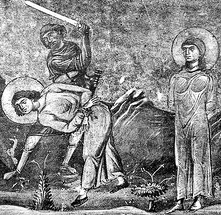
Brother and sister, as children they were arrested for being Christians during the persecutions of Maximinian Herculeus. In court they admitted it and refused to renouce the faith. Martyr.
• thrown into a cauldron of boiling oil, they stepped out unhurt
• beheaded in 302 at Nicomedia, Asia Minor (in modern Turkey)
https://catholicsaints.info/saint-eulampia/
https://catholicsaints.info/saint-eulampius/

One of a group of nine martyrs who were murdered at the command of Emperor Maximian Herculeus. May have been part of the Theban Legion.
• beheaded c.303 at Bonn, Germany
• a church was built over their tombs in the 4th century
• relics translated to the present church in 1166
• re-discovered there in 1929
Bonn, Germany
member of the Theban Legion
https://catholicsaints.info/saint-florentius-the-martyr/

One of a group of nine martyrs who were murdered at the command of Emperor Maximian Herculeus. May have been part of the Theban Legion.
• beheaded c.303 at Bonn, Germany
• a church was built over their tombs in the 4th century
• relics translated to the present church in 1166
• relics re-discovered there in 1929
Bonn, Germany
member of the Theban Legion
https://catholicsaints.info/saint-cassius/

Viktor
22 September as one of the Martyrs of the Theban Legion
Relative of Saint Verena. Soldier. Leader of a cohort of the Theban Legion. Martyr. One of the Theban Martyrs.
• c.287 in Agaunum (modern St-Maurice-en-Valais, Switzerland
• relics translated to the cathedral in Xanten, Germany in the 12th century
https://catholicsaints.info/saint-victor-of-xanten/

Gerone
Imperial Roman soldier. Martyred with 290 other Christians on order of emperor Maximian for refusing to sacrifice to pagan gods to obtain victory in battle.
• beheaded c.304 in either Xanten or Bonn in Germany (records vary)
• relics translated to Cologne, Germany
• against headaches
• against migraine
• Cologne, Germany
https://catholicsaints.info/saint-gereon/
Brother Pedro Tomás of the Virgin of the Pillar
Discalced Carmelite priest. Martyred in the Spanish Civil War.
26 April 1888 in Zaragoza, Spain
10 October 1936 in Garraf, Barcelona, Spain
28 October 2007 by Pope Benedict XVI
https://catholicsaints.info/blesssed-pedro-de-alcantara-de-forton-de-cascajares/

Layman. Soldier in a legion of Christian soldiers from Upper Egypt during the reign of Emperor Maximian Herculeus. The legion, as many as 6600 men, was massacred en masse by their own side when they refused to participate in pagan sacrifices prior to battle.
c.287 at Aaunum, an area of modern Switzerland
https://catholicsaints.info/saint-malo-the-martyr/
Pilgrim from the British Isles who emigrated to Capua, Italy. He was such an obvious holy man and teacher that the locals demanded that he become their bishop. He served for eight years, fled the area during the Saracen invasion, served as best he could from Sicopli, Italy, and died in exile.
843 in Sicopoli (modern Triflisco), Italy of natural causes
https://catholicsaints.info/saint-paulinus-of-capua/
Migrated to Spoleto, Italy in 1441. Franciscan tertiary. Spiritual student of Blessed Gregory of Spoleto. Prayerful hermit on Monte Luco for 50 years.
Albania
• 10 October 1491 of natural causes
• buried at the church of the Franciscan monastery of Saint Paul outside Spoleto, Italy
https://catholicsaints.info/blessed-demestrius-of-albania/
Aldric, Audri
Benedictine monk at Ferrières, France. Priest. Archbishop of Sens, France in 828.
790 in the Gatinais region of France
• 841 of natural causes
• most relics destroyed by Huguenots in 1569
Sens, France
https://catholicsaints.info/saint-aldericus/
• Pinytus of Cnossos
• Pinytus of Knossos
• Pinito...
Bishop of Crete. His contemporaries considered him one of the greatest ecclesiastical writers of his time.
Greece
180 of natural causes
https://catholicsaints.info/saint-pinytus-of-crete/

Chiara
Third century missionary to Armorica (in modern Brittany, France). Bishop of Nantes, France.
https://catholicsaints.info/saint-clarus-of-nantes/
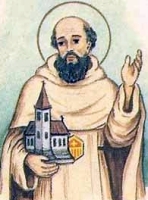
Mercedarian friar. Theologian and teacher of theology.
Lyon, France
https://catholicsaints.info/blessed-pontius-de-barellis/
Cistercian Benedictine monk. Abbot at Pontigny in 1114. Bishop of Auxerre, France in 1137, the first Cistercian monk to become a bishop.
1151
https://catholicsaints.info/blessed-hugh-of-macon/
Telchilde
Nun. Abbess of Jouarre Abbey, Meaux, France c.630 where she was a noted spiritual teacher of her sisters.
https://catholicsaints.info/saint-teodechilde/
Cistercian Benedictine monk. First prior of the Cistercian abbey at Las Junias, Portugal in 1135.
c.1163
https://catholicsaints.info/saint-gundisalvus/
Cerebonius
Bishop of Verona, Italy.
c.400
https://catholicsaints.info/saint-cerbonius-of-verona/
Benedictine monk. Abbot at Fontenelle in France.
845 of natural causes
https://catholicsaints.info/saint-fulk-of-fontenelle/
Fifth century bishop in Scotland. Driven into exile by pagan Scots, he spent his latter years as a hermit on the Isle of Man.
https://catholicsaints.info/saint-patrician/
Young girl martyed defending her virginity.
c.637 near Troyes, France
https://catholicsaints.info/saint-tanca/
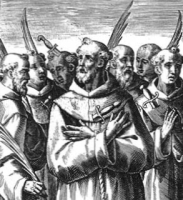
A group of seven Friars Minor who tried to bring the faith to Muslims in the area of Ceuta, Spain, which borders on modern Morocco. Initially treated as madmen, especially since they were street-preaching in Latin and Italian, within three weeks they were ordered to convert to Islam, and when they would not, they were first abused in the streets, then arrested, tortured and executed. Martyrs.
• Angelo
• Daniele di Calabria
• Donnolo
• Hugolinus
• Leone
• Nicola
• Samuele
• beheaded in October 1227 in Mauritania Tingitana, Almohad Empire (modern Ceuta, Spain)
• local Christians secreted the bodies away and gave them proper burial in Ceuta
22 January 1516 by Pope Leo X
https://catholicsaints.info/martyrs-of-ceuta/
• Galeotto Roberto Malatesta
• Maria dello Sposalizio
CatholicSaints.Info Portable Edition